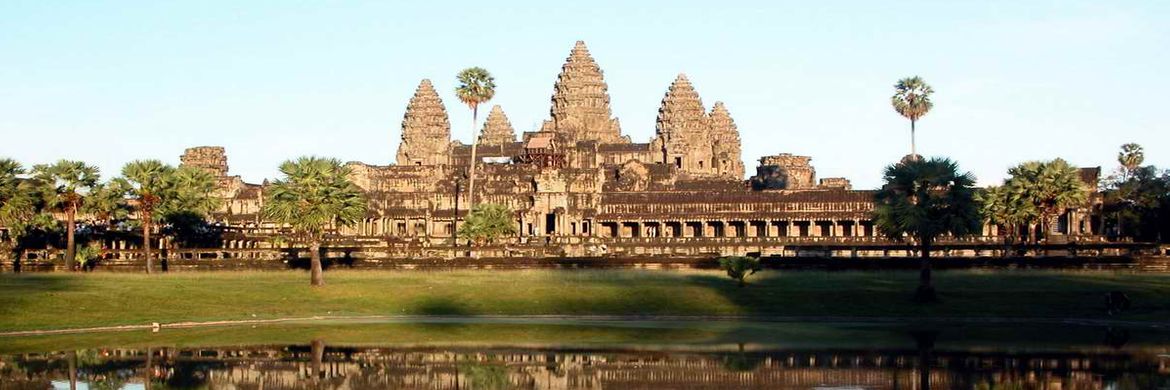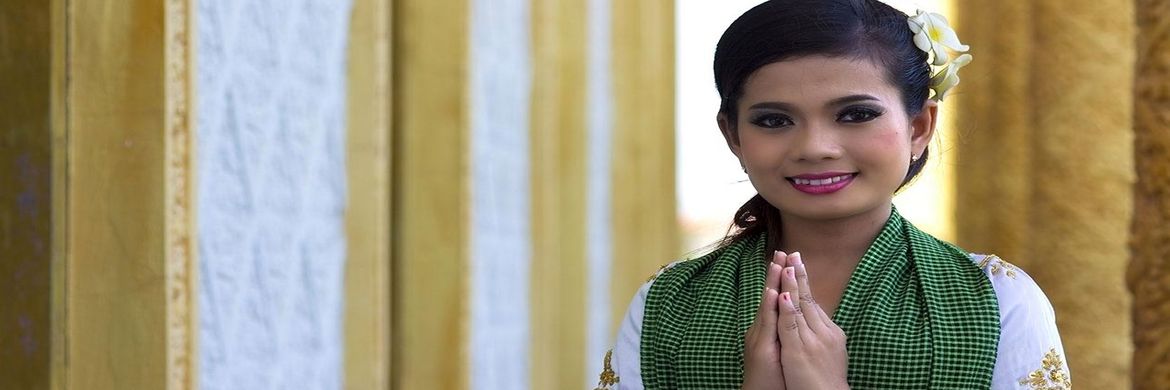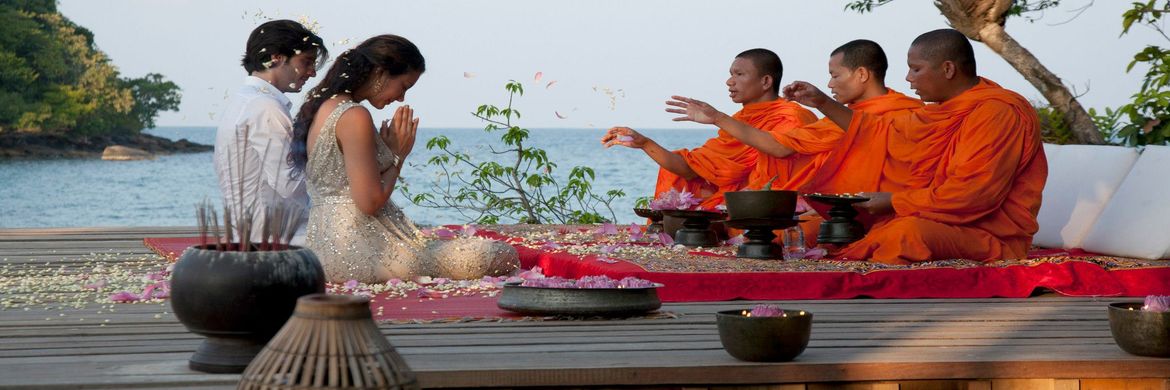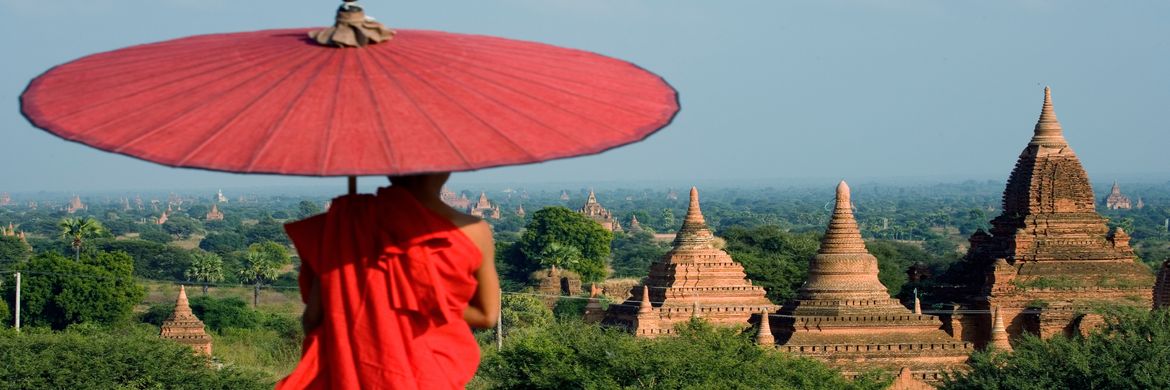Cambodia Escapes
Cambodia is a Southeast Asian nation whose landscape spans low-lying plains, the Mekong Delta, mountains and Gulf of Thailand coastline. Phnom Penh, its capital, is home to the art deco Central Market, glittering Royal Palace and the National Museum’s historical and archaeological exhibits. In the country’s northwest are the ruins of Angkor Wat, a massive stone temple complex built during the Khmer Empire.
Cambodia’s geography has played a substantial role in shaping its history. Its central location along the Indochinese Peninsula and relatively flat terrain facilitated the rise of the Khmer Empire which flourished from its base in Angkor for over 500 years. Conversely, Cambodia’s proximity to the chaos of the Vietnam War sowed seeds of catastrophe that the country is now recovering from. Both of these periods are inextricable to the identity of both Cambodia, and its people.
The Kingdom of Cambodia has rightfully become a tourism mecca due to the magnificent architectural heritage of Siem Reap. In the past several decades, Angkor Wat has become one of the world’s most famous attractions, on par with the Great Wall of China and the Taj Mahal, even earning center stage on the Cambodian national flag. Other must-see Angkor ruins within the UNESCO-protected archaeological park include the superlative Ta Prohm, Bayon and Banteay Srei, to name but a few.
It would be a mistake, though, to think that Cambodia starts and ends with Siem Reap. The capital, Phnom Penh, continues to revitalize itself and offers excellent Khmer arts experiences, an itinerary counterbalance to sober reflection on the Khmer Rouge years. Rural Battambang tempts with authentic countryside life, far removed from the traffic of Angkor. And the southwest coastal towns of Kep and Sihanoukville, in addition to their charming French colonial remnants, are now a portal to one of Southeast Asia’s most acclaimed new resorts, Song Saa Private Island. Cambodia today is a complete holiday destination like never before.
In the simplest terms, Cambodia is defined by legacy, contrast and courage. Its astounding array of historical offerings proudly convey the extent of its former glory while beaches, towns and jungles remain ripe for discovery. Despite a tumultuous recent past, Khmer people’s resilience and hospitality make Cambodia a traveller’s paradise.
SIEM REAP
Named for a crushing defeat inflicted on an invading Thai army by the Khmer Empire, the battle at Siem Reap was later avenged by another Thai kingdom, who went on to rule the area for a time before losing it to the French. Afterwards, Siem Reap fell into obscurity and as little as twenty years ago, was a sleepy town with muddy streets and a population of 5,000. Today, thanks to its proximity to the superlative ruins of the ancient Khmer kingdom of Angkor, it has become one of the premier destinations not only in southeast Asia but the entire world, with five-star hotels and other, world-class facilities. Recognizing the importance of the complexes of Angkor Wat, Bayon, and Angkor Thom, both for the sake of posterity and the present day tourism economy, the Cambodian government has made preserving this heritage a top priority.
PHNOM PENH
Located at the confluence of the Mekong, Bassac, and Tonle Sap Rivers, Phnom Penh was reputedly founded by a wealthy widow named Daun Penh, who discovered Buddha statues hidden in a hollowed out log that washed up to her doorstep during a flood of the Mekong. Throughout the centuries, Phnom Penh served as the capital of various Cambodian realms, from the ancient Khmer Empire to the French colonial administration, and finally the modern-day government of Cambodia.
Today, Phnom Penh is a chaotic, lively maze of tumbling streets, tuk-tuks, bicycles, and motorcycles. A blur of activity from morning until well after sunset, Phnom Penh’s streets are dotted with a mix of colonial French buildings and traditional Cambodian architecture; with its legendary nightlife and bustling avenues, Phnom Penh has something for everyone. Highlights include the temple of Wat Phnom, where Daun Penh was said to have founded the city, and Tuol Sleng, the sobering, former prison where opponents of the Khmer Rouge were executed.
BATTAMBANG
Throughout its colorful life, the northwestern city of Battambang has been, alternately, a trading city of the Thai, the Khmer, and finally, the French. Its rich history is well-reflected in its streets, which sport a fascinating mix of eastern and western architecture, from elaborate temples like Wat Ek Phnom and Wat Banan to quaint, French buildings. Stroll the pleasant avenues, which harken back to the bygone days of French rule, or explore the surrounding countryside for a glimpse of rural life in Cambodia.
CARDAMOM MOUNTAINS
Named for the spice trees that grow abundantly on its eastern slopes, the Cardamom Mountains are home to the Bokor Mountain Hill Station, once filled with French colonial elites seeking to escape the tropical heat. During the late 1970s, the Cardamom Mountains were the last refuge for the Khmer Rouge, and the site of constant battles; it was only after their defeat in the mid-1990s that life was restored to a peaceful normality, and tourists began to once again visit the region.
KEP
Once the site of a series of major battles between the French colonial forces and a Chinese army, modern-day Kep is a relaxed beach town. During the colonial era, Kep was a favorite destination of the French and Cambodian elite, most notably King Sihanouk, whose former villa still stands in the area. Today, Kep’s quaint streets and close proximity to the pristine beaches and waters of the Gulf of Thailand offer a markedly different experience than elsewhere in the country.
- Island Visit – Rabbit Island, Take a boat for a half-day of snorkeling at nearby Rabbit Island, where the waters are a technicolor display of tropical fish.
- Fly above the Angkor Temples – Get a unique perspective on the ancient wonders of Cambodia with an unforgettable helicopter flight to remote Angkorian temples.
- Cruise the Mekong River in Style – Explore the waterways of Cambodia aboard ‘Aqua Mekong’, an elegant ship built for the discerning traveler.
- Enjoy exclusive excursions – Explore Angkor with a famous photographer, enjoy a private temple-side dinner, stay at a lush seaside villa and more!
- Try an authentic Khmer dinner – Get a taste of the local food at a well-known restaurant in Angkor Wat.
- Explore the magnificent Angkor Thom – Tour this historic city which is home to the famous a Ta Prohm featuring an imposing stone gate and impressive stone sculptures.
- Play golf at a luxurious country club – Have a round of golf at the world-class golf course of Phokeethra Country Club.
- Watch a cultural performance – Witness a performance by the Cambodian Circus as they depict stories of Cambodian life through dance, music, and acrobatics.
- Visit ancient temple ruins – Go into each of the historical ruins in Siem Reap for a look into the country’s rich history.
- Learn about local art – Meet a local artist who will give a tour of the studio and show various works made in the workshop.
- A candlelit dinner by the sea – Hop on a private jetty for a luxurious dinner by the tranquil sea.
- A private rooftop dining experience – Relax in the Knai Bang Chatt’s iconic blue villa for a glass of sparkling wine and a four-course meal.
- Visit Cambodia’s bustling cities – Explore the markets and museums of Phnom Penh and Siem Reap.
- Discover the temple ruins in the jungle – Travel into the mainland to see the breathtaking beauty of ancient ruins at sunrise and sunset.
- Enjoy a luxury resort on a tropical island – Conclude this fascinating journey with the last days in a luxurious tropical resort with all amenities.




